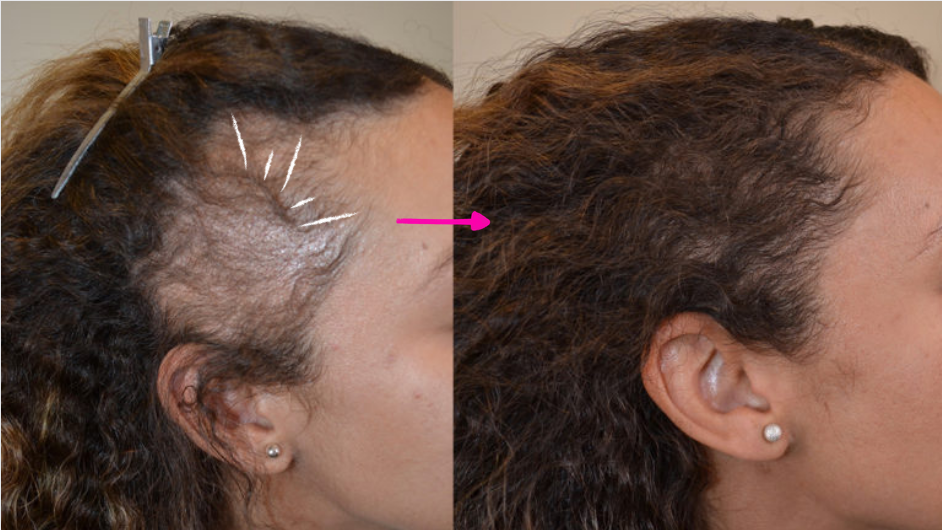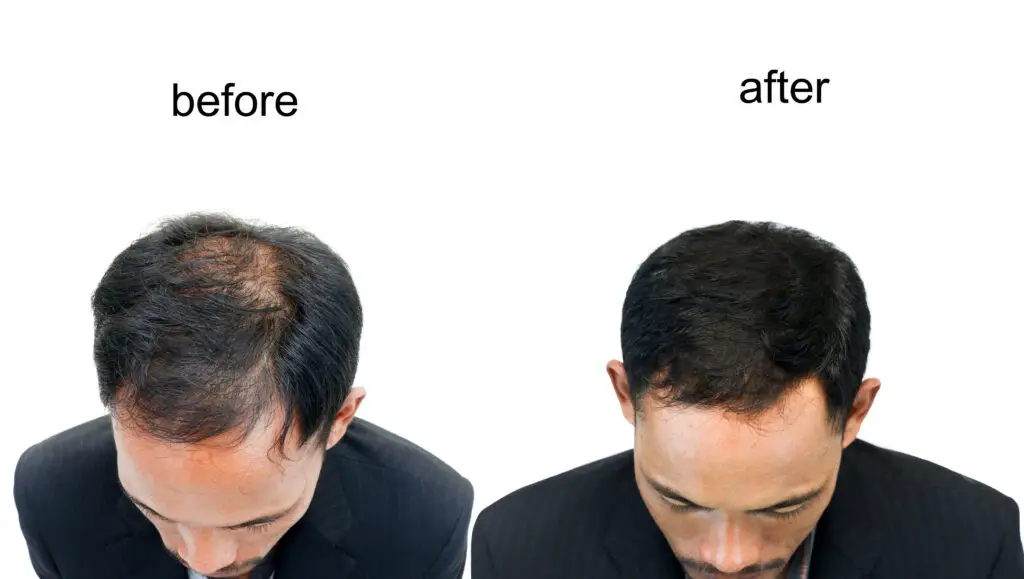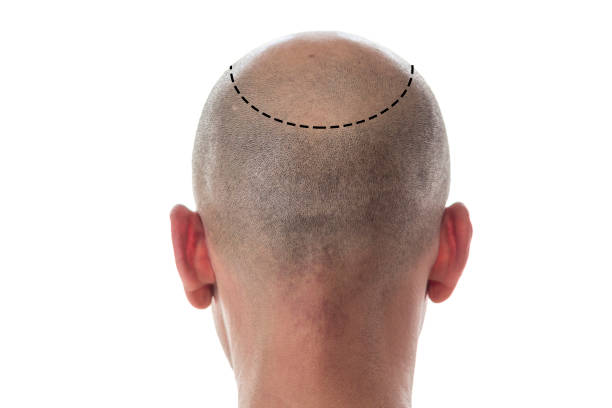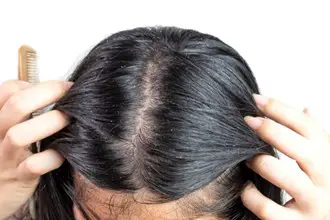Is Traction Alopecia Making You Lose Your Hair? Hair Transplant Treatment Might Be the Solution.
Traction Alopecia Hair Transplant
Traction Alopecia Hair Transplant is a procedure used to treat hair loss due to Traction Alopecia, a condition caused by excessive tension on the hair follicles due to tight hairstyles. This kind of hair loss can be devastating, both physically and emotionally. But with a Traction Alopecia Hair Transplant, it is possible to restore hair growth and get back to a normal stage. In this blog post, we will discuss when treatment for Traction Alopecia Hair Transplant is necessary.
Of all hair loss treatments, the hair transplant is considered the most serious and is certainly the most involved and costly. It is most often used as the last resort by people suffering from various types of hair loss including traction alopecia, after other methods of regrowing hair has failed to produce the desired results.
What is traction alopecia?
Traction alopecia is a condition caused by the damage of the hair follicles due to excessive tension on the hair. This condition can result from hairstyles such as tight ponytails, buns, cornrows, and other styles that put a strain on the hair follicles over a period of time.
Symptoms
The symptoms of traction alopecia include:
- Thinning of the hair in specific areas
- Bald spots
- Burning scalp
- Small bumps on the scalp
- Causes black male hair thinning on top
In some signs of permanent traction alopecia, the hair may not grow back at all. When the damage from traction alopecia is severe and not responsive to treatment, a hair transplant for alopecia may be necessary to restore the lost hair.
Causes of Hair Loss By Traction Alopecia
Traction alopecia is a form of hair loss resulting in bald patches where the scalp has been damaged. It is often found in women who wear tight hairstyles, which require extensive pulling on hair follicles, and users of hair extensions. While not permanent, the scalp may take months or even years to fully recover from the damage it has received.
The causes of hair loss of this kind are varied, but each type results in the same inflammation of the scalp and damage to the follicles. The main cause of traction alopecia is a deformation of the hair follicles, which occurs due to pulling, tension and excessive weight on the hair.
The natural growth cycle for a hair follicle involves going into a periodic dormant state, during which time the follicle repairs itself. When the follicle is deformed, the dormant state is lengthened; and sometimes becomes permanent. In these situations, the roots weaken, and the hair no longer grows.
As a direct result of many follicles going into a prolonged dormant state, bald patches appear. This is known as traction alopecia. In addition, the scalp will often become itchy and inflamed in the area where the damage has been caused, which in itself can lead to further damage due to scratching and rubbing.
Pulling on the Hair Follicles
One of the main causes of hair loss in sufferers of traction alopecia is down to excessive pulling on the hair, and thus on the hair follicles. Hairstyles such as ponytails, which pull hair tightly at the crown, exert a lot of pressure on the hair follicles, which leads them to deform.
Pulling on the hair follicles is also caused by an excessive hair styling regime that requires a lot of combing and teasing of the hair in order to create the right look. When you wear a style like that, consider taking a few days off and letting your hair recover afterwards; to give your hair a chance to recover.
Tension on the hair
Tension on the hair is a major hair loss condition because it actively deforms the hair follicle. Tension is caused by pulling on the hair through tight weaves and also by adding weight to the hair, as occurs when using hair extension causes traction alopecia.
Tight weave braiding, whether for hair extensions or simply as part of a hairstyle, involves holding each strand of hair under significantly increased tension. This pulls on the roots of the hair, and when the hair grows, the tension is only increased. The tighter the braids and the closer the braids are knit to the scalp, the more tension the hair is under. See how to tie hair to prevent hair loss.
This results in damaged hair follicles, weaker hair roots, and, eventually, bald patches caused by traction alopecia.
Excessive weight on the hair
Hair follicles are not designed to carry a lot of weight. The scalp sprouts hair that it can carry, but any extra weight placed on the hair can overload the follicles in the scalp, which causes deformation of the follicles and thus leads to baldness.
Extra weight is placed on the hair by attaching hair extensions. Extensions can be added using a variety of methods, from traditional beeswax and modern glues; to braiding the extensions into the hair or even tightly braiding the natural hair and stitching the extensions into the braids. Each attachment method adds weight to the hair, which pulls on the follicles.
Scratching and Rubbing
One source of traction alopecia that is often overlooked is due to mechanical damage to the scalp in the form of scratching and rubbing. Rubbing often occurs where tightly-fitted helmets are worn, such as crash helmets and safety helmets worn in the workplace. These press onto the scalp and rub both the scalp itself and any hair caught between the scalp and the hat.
Similarly, when the head is scratched repeatedly and on a regular basis, as can happen with an inflamed scalp caused by excessive hair styling, the hair is put under pressure, and the damage to the scalp is exacerbated.
The result is that the hair is continually pulled while under pressure, and the scalp is inflamed. As with pulling and tension due to hairstyling, this causes damage to the hair follicles, and traction alopecia can occur as a direct result.
The causes of hair loss by traction alopecia are varied, but their effects on the scalp are similar. Each of the various causes damages the hair follicles, deforming them and causing their dormant phases to elongate. The hair roots become weaker, and the hair will eventually either snap or simply fallout, at which point bald spots begin to appear. The only solution is to give the scalp time to heal itself, a process that can be sped up by using internal and external treatments for traction alopecia hair loss.
What is a hair transplant for alopecia?
A hair transplant for alopecia is a surgical procedure where hair follicles are removed from one part of the body and transplanted on another part (usually the head, in cases of hair loss). It’s used to treat baldness, as the hair follicles used are considered resistant to balding. The modern hair transplant is produced by removing follicular units, naturally grouped follicles of 1–4 hairs, and transplanting them together to achieve natural looking results.
In addition to hair transplants for alopecia, other treatments for traction alopecia include topical medications, laser therapy, and regular trims. It’s important to consult with a doctor or dermatologist to determine the best course of action. With the right treatment plan, it is possible to successfully manage and even reverse the signs of traction alopecia.
How is a hair transplant performed?
The procedure is performed under local anaesthesia, with minor sedation if desired. The doctor will remove hair follicles from the back of the head, where hair is considered more resistant to balding. The modern hair transplant can be minimally invasive with relatively small incisions, resulting in the ability to place over 50 grafts of hair follicles in an area the size of a square centimeter.
There are several methods of harvesting hair follicles from the more resistant parts of the head. The main ones used today are follicular unit extraction as well as strip harvesting. Follicular unit extraction is more time consuming but does not leave a scar and is less painful. It is also more costly.
Strip extraction is faster and more common, where a strip of the scalp is removed from the back of the head, dissected and then reintroduced to the thinning areas of the scalp.
What stage is a hair transplant necessary to treat traction alopecia?
A hair transplant for traction alopecia is recommended when other methods of treatment have failed, such as when the hair follicles are scarred and won’t be stimulated to produce new hair growth. A doctor may recommend a hair transplant when a recognised topical drug (such as minoxidil) or prescription medication has been used for a duration of six months or more and has produced no visible improvement to the condition of the hair and scalp.
Not all types of hair loss call for a hair transplant, with many clinics encouraging men with receding hairlines, for example, to accept a certain amount of hair loss rather than attempt to create an unnatural look by transplanting hair.
What are the side effects of a hair transplant?
A certain amount of hair loss immediately following the hair transplant is common as a result of the operative shock. This effect is usually temporary but can result in distressing bald patches until recovery. A certain amount of swelling can also occur and can be treated by medication.
A few years after the hair transplant, there can be further hair loss, though the transplanted hair will likely remain. This can result in further bald patches, and another hair transplant may be necessary (or the previously transplanted hairs can be removed).
Conclusion
A traction alopecia hair transplant is not the only way to restore hair loss caused by traction alopecia. However, a Traction alopecia hair transplant can provide a permanent solution to hair loss, but it is not suitable for everyone. Before deciding if this treatment is necessary for you, you must consult a doctor to determine if it is the best solution.
- AI Powered Bald Filter Online 2024: See Yourself with No Hair! - January 19, 2024
- Harklinikken Bad Reviews 2024: Analyzing Negative Feedbacks - January 18, 2024
- How to Get the Alex Eubank Hair | Step-By-Step Tutorial 2024 - January 18, 2024







